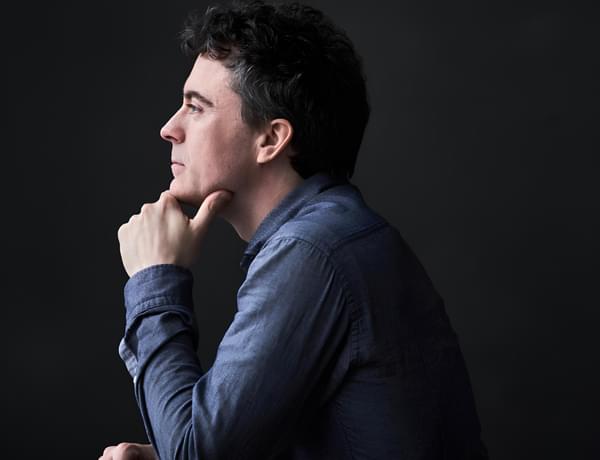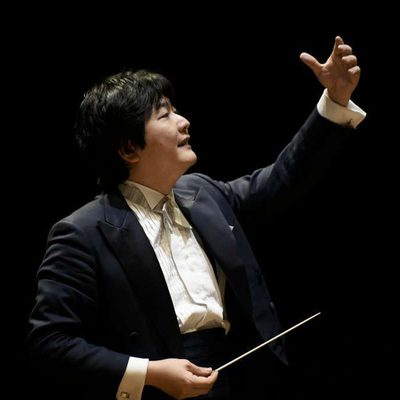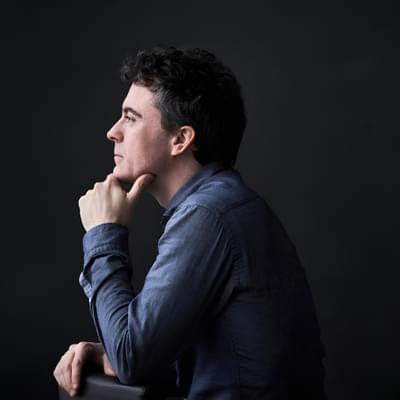Kazuki Conducts Mozart & Mussorgsky

Full programme
- Ravel, Mother Goose Suite (16mins)
- Mozart, Piano Concerto No.27 (32mins)
- Holmès, La Nuit et L’Amour (6mins)
- Mussorgsky (arr. Wood), Pictures at an Exhibition (34mins)
Performers

Kazuki Yamada
Conductor
Paul Lewis
Piano
Introduction
Welcome to an enchanting evening of music that will transport you into a world of fairy tales and childhood wonder.
As a guest percussionist with the CBSO, I am thrilled to fulfil my lifelong dream of playing the church bells in the final movement of Henry Wood’s arrangement of “Pictures at an Exhibition”, using nine of the Royal Liverpool Philharmonic’s unique collection of Forever Bells. Wood, an English conductor renowned for founding the London Proms in 1895, completed this arrangement in 1915, seven years before Ravel’s more famous version was composed.
Wood's arrangement remains faithful to Mussorgsky’s original piano suite while introducing a vibrant and imaginative orchestral palette, including organ, camel bells, and an Indian drum, which enhances the work’s dramatic power. The inclusion of real church bells adds a distinctive sonic element, symbolising the grandeur and majesty of the monumental “Great Gate of Kiev”. Although the bells are played offstage due to their considerable size and weight, their bright, clear tones will resonate throughout the hall, providing a triumphant and ceremonial atmosphere to the work's conclusion.
The concert begins with Maurice Ravel's “Mother Goose Suite” (“Ma Mère l’Oye"), a charming orchestral piece originally composed for piano duet in 1910 and later orchestrated by Ravel in 1911. Particularly noteworthy from a percussionist’s perspective is the composer’s imaginative and meticulous use of percussion, in particular the xylophone and glockenspiel in “Empress of the Pagodas”, which evoke an oriental atmosphere, creating a glistening and magical sound world. Ravel's percussion orchestration is renowned for its refinement and subtlety, always enhancing the texture rather than dominating it. His music is a joy to perform.
Augusta Holmès' “La Nuit et L’Amour”, a lesser-known gem, is rich with romantic and impressionistic elements. Listen out for its lush textures and dramatic contrasts, and be captivated by its sweeping, lyrical lines.
Mozart’s Piano Concerto No. 27, his final concerto, exudes mature elegance and subtle introspection. This work, written without timpani or percussion, makes me wonder what the great Mozart might have done with today’s wide array of percussion instruments—a question left to our own dreams and imagination.
Enjoy this concert of captivating, dynamic wonderment and vivid orchestral colours - I know I certainly will.
Graham Johns
CBSO Musician
Programme Notes
All human – and animal – life is here! Ravel creates a magical world of fairy tales, while the weird and wonderful images in Mussorgsky’s Pictures at an Exhibition are brought to vivid life by Kazuki and the CBSO before we head to the BBC Proms. In amongst it all is a lush, romantic interlude by Augusta Holmès, while Paul Lewis is at his elegant best in Mozart’s last Piano Concerto.
Mother Goose Suite
Maurice Ravel (1875-1937)
‘Ma mère l’Oye’ – literally, ‘my mother, the goose’ – is more commonly known in this country as Mother Goose. Ravel originally conceived the piece in 1908 as a piano suite, with each movement based on a well-known fairy tale (it was written for two children, Mimi and Jean Godebski). As he was wont to do, he orchestrated it the following year and later recycled the piece into music for a ballet. In common with his one-act opera L’enfant et les sortilèges (The Child and the Sorcerers) the suite creates a magical, childhood world in which Ravel explores an eclectic range of musical styles. The harmonies in the third movement (‘Laideronnette’) for example were derived from the Javanese music Ravel encountered, not long out of childhood himself, at the Paris Exposition in 1889.
The first movement ‘Pavane au belle au bois dormant’ (Sleeping Beauty) is from another time and place altogether, a stately, melancholy dance, harking back to the ‘Pavane’ style from sixteenth century Spain. The woods in which Sleeping Beauty rests are evoked by some extraordinary birdsong effects in the solo violin. ‘Petit Poucet’ (Tom Thumb) is on a melancholy journey in the second movement, encountering further birdsong on the way. Only at the end – as fellow composer Messiaen puts it – does a ’major third at last [put] a smile on Tom’s face.’ The third movement is the gamelan-inspired ‘Laideronnette’ while the fourth is a waltz-like dialogue between Beauty and the Beast. The themes of each are heard individually at first, then gradually form a tender partnership by the end. The final movement (‘Le jardin féerique’, or fairy garden) is quiet for the most part until a wonderfully-sustained build to the final, spine-tingling bars.
Piano Concerto no. 27
Wolfgang Amadeus Mozart (1756-1791)
Mozart completed his final piano concerto in January 1791 at a time of tremendous stress and worry. His long-term patron Emperor Josef II had died the previous year and the opera houses were closed for an extended period of mourning, so Mozart’s income had nosedived. His fame and popularity were on the decline, and the new Emperor – Leopold – seemed not to rate him very highly. He was worried about his wife Constanze, who had become ill. Yet despite such concerns, the B flat major concerto is largely a serene work, albeit less extrovert or ‘mighty’ than some of his recent concertos (such as its sparkling predecessor, no. 26 ‘The Coronation’, or the grand no. 25 in C major). Its introverted style may have led Mozart scholar Cuthbert Girdlestone to suggest – presumably influenced by hindsight – that it announces ‘the end of a life’ with ‘the quality of a farewell’: Mozart would die, aged only 35, eleven months later in December 1791. (Others, however, have pointed out that it was probably conceived in draft several years earlier.)
Whatever the importance or otherwise of its context, the concerto is elegant and restrained with a light-touch orchestration, excluding the trumpets and timpanis of the previous two concertos. The opening movement is gentle and unassuming on the surface, with the orchestra introducing the principal theme before the piano joins – so far so conventional. Both soloist and orchestra then embark on a wide-ranging harmonic adventure, frequently changing key – sometimes several times within a few bars – giving this peaceful movement a subtly subversive quality. The slow movement is where, if so inclined, you might find an air of ‘farewell’: its principal theme is wistful, pared-back and melancholy despite its major key. The third movement has a deceptive simplicity, especially in its opening bars. Amateur pianists, this writer included, may begin to think they could have a bash at tackling the piano part – though four minutes later they may change their mind when faced with a series of fiendish semiquavers and a mini-cadenza. As so often with Mozart, beauty is manifest through absolute clarity and precision. It is particularly so in this final, perhaps most clear and precise of his piano concertos.
La Nuit et l’Amour
Augusta Holmes (1847-1903)
Augusta Holmès was a French composer of Irish descent (she was originally named ‘Holmes’, adding the accent on becoming a French citizen). In common with many women composers from the nineteenth century she struggled to be taken seriously and published a few pieces using a male pseudonym. She was, however, rightly ambitious for herself and for the magnitude of the works she composed, which included operas and orchestral works, and she gained a reputation for creating large-scale works of a political or nationalist nature. ‘La Nuit et l’Amour’ was originally an orchestral interlude in her ‘Ode-Symphonie’ Ludus pro patria (‘Patriotic Games’) for which she had also written the words. It is a lyrical, instantly engaging piece, with a skilfully-handled build to the central unison section. It is marked ‘Andante amoroso’, expressing the full-bloodedly passionate text of the Ode-Symphonie.
Pictures at an Exhibition
Modest Mussorgsky (1839-1881)
As with Ravel’s Mother Goose, Mussorgsky conceived Pictures at an Exhibition as a piano suite. He composed it in 1874 in response to an exhibition of paintings in St Petersburg by his friend Viktor Hartmann, who had died suddenly the previous year. Some of the paintings have been identified – such as ‘Ballet of the Unhatched Chicks,’ which came from a costume for choreography, and ‘The Hut on Fowl’s Legs’, a clock designed with legs like a chicken.
Mussorgsky places himself in the work during the ‘Promenade’ sections – in the original piano suite there are four versions of this, varying in mood. He wrote that he had conjured up a musical picture of himself ’roving through the exhibition, now leisurely, now briskly, in order to come close to a picture that had attracted his attention, and at times sadly, thinking of his departed friend.’ The piece seems to have been considered a novelty – and not to be taken seriously – by both composer and his circle of friends, and it was not published in his lifetime. It subsequently appeared in print but is curiously unpianistic in places, particularly in the longer, sustained passages (such as ‘Catacombs’ and ‘Great Gate of Kiev’). It works considerably better for ensemble and many composers and musicians over the decades have gone to town with its vivid, sometimes bizarre imagery. There are indeed an extraordinary number of arrangements, from Ravel’s famous orchestration to a version by Yaron Gottfried for jazz trio, to Mekong Delta’s take for thrash metal band.
Sir Henry Wood, the Proms conductor who introduced British audiences to a huge amount of contemporary music, was the second arranger to tackle it in 1915. (Somewhat modestly, after Ravel produced his in 1922, Wood banned performances of his own at the Proms in the 1930s). His own version takes more liberties with Mussorgsky’s score than did Ravel, chiefly in omitting all but the first ‘Promenade’ (although it does emerge from the sombre texture at the end of ‘Catacombs’). His brilliantly imaginative orchestrations range from the delicate (a sprightly solo spot for the first violin in ‘Tuileries’ and playful woodwind for the ‘Unhatched chicks’) to atmospheric (sternly swaying trombones and off-stage camel-bells in ‘Bydlo’) to gloriously no-holds-barred by its final movement, throwing bells, pipe organ and the kitchen sink at the ‘Great Gate of Kiev.’
© Lucy Walker
Featured image © Kaupo Kikkas